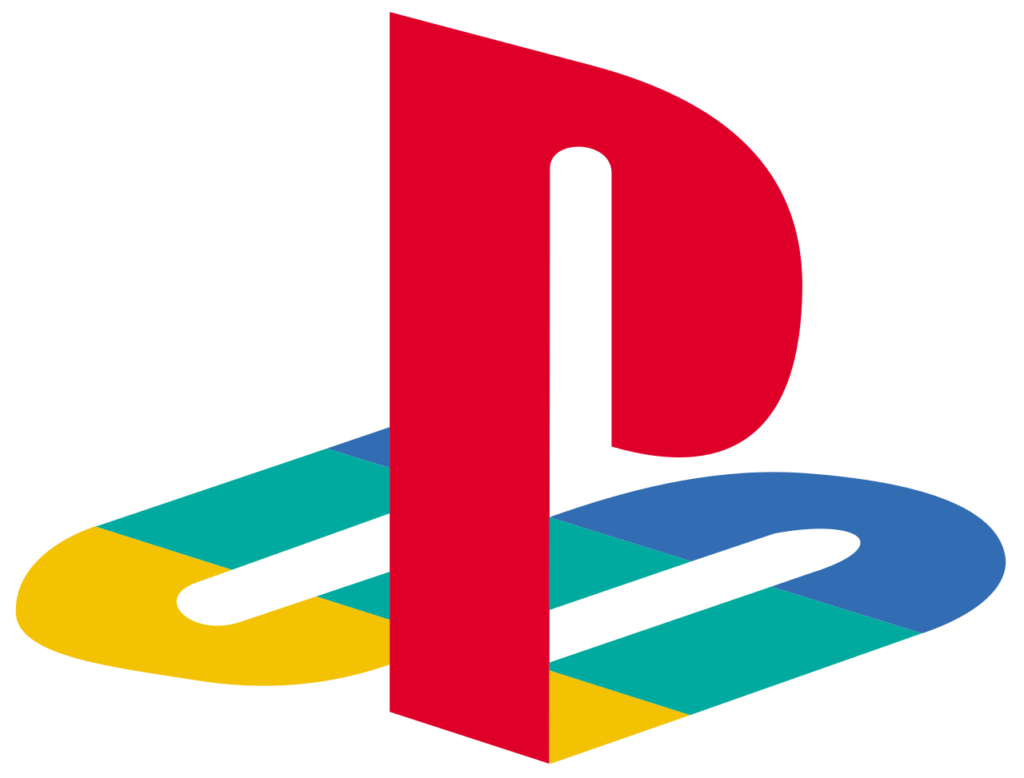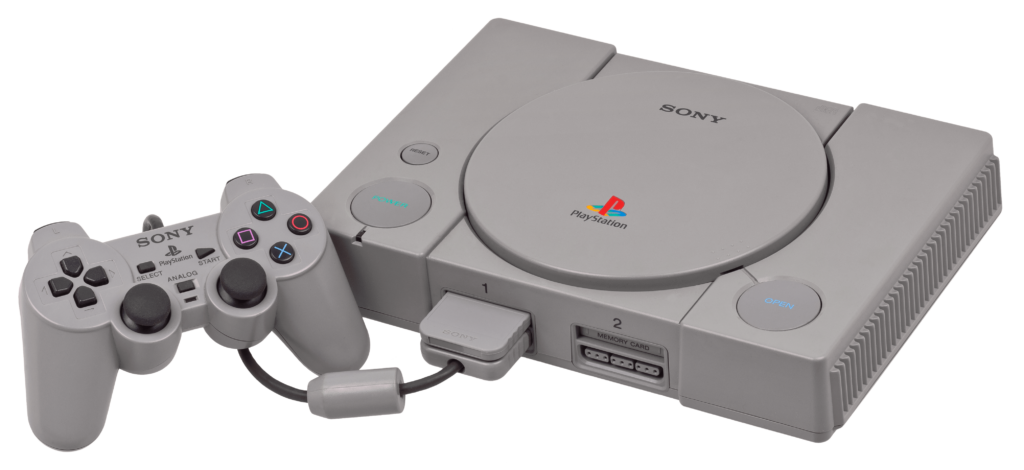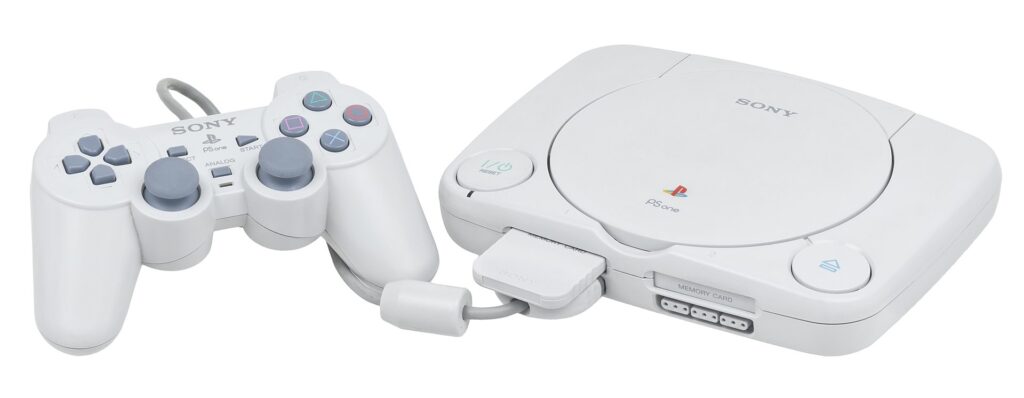



The PlayStation, also known as PS1, was launched by Sony in 1994 and marked the company’s entry into the video game console market. Originally, Sony had partnered with Nintendo to develop a CD-ROM add-on for the Super Nintendo Entertainment System (SNES). However, after the partnership ended, Sony decided to transform the project into an independent console. The PlayStation was a pioneer in using CDs instead of cartridges, allowing for games with more advanced graphics, high-quality soundtracks, and more complex experiences.
Technical Information
- CPU: 32-bit R3000A running at 33.8688 MHz
- RAM: 2 MB
- Video Memory: 1 MB
- Resolution: 256×224 to 640×480 pixels
- On-Screen Colors: Up to 16.7 million colors
- Audio: 24-channel PCM sound, with CD audio support
- Storage: 1 MB memory cards
- Primary Media: CD-ROM
- Expansion Ports: Parallel port, serial port, and memory card slots
General Information
- Console names: PlayStation, PS1, PSX
- Release date: December 3, 1994 (Japan), September 9, 1995 (USA), September 29, 1995 (Europe).
- Original price: US$ 299 (USA).
- Country of origin: Japan
- Manufacturer: Sony Computer Entertainment.
- Primary media: CD-ROM
- Units sold: Approximately 102.49 million units worldwide
- Predecessor: None (Sony’s first console)
- Successor: PlayStation 2
- Backward compatibility: none.
Accessories and Special Controllers
- Original controller: Standard controller with directional and action buttons, without analog sticks.
- DualShock: Controller with two analog sticks and vibration feedback, which became the standard for future consoles.
- Multitap: Accessory that allowed up to four controllers to be connected simultaneously.
- Memory Card: 1 MB memory cards for saving game progress.
- GunCon: Light gun used in shooting games such as “Time Crisis.”
- PlayStation Mouse: Used in strategy and point-and-click adventure games.
- PocketStation: A portable device with an LCD screen, buttons, and infrared communication capabilities. It served as a memory card and featured minigames that could interact with PlayStation titles, particularly popular in Japan.
Impact and Legacy
The PlayStation revolutionized the video game industry by popularizing the use of CD-ROMs, allowing for longer and more complex games. Iconic franchises such as “Final Fantasy VII,” “Metal Gear Solid,” “Resident Evil,” and “Gran Turismo” were launched on the PS1, setting new standards for storytelling and gameplay. The console’s success established Sony as a major player in the industry and profoundly influenced the design and technology of future consoles.
Curiosities
- The PlayStation was the first console to sell more than 100 million units.
- The original prototype, the result of the partnership with Nintendo, is now considered an extremely rare collector’s item.
- The “PSX” acronym was initially used to refer to the PlayStation during development and was later reused for a DVR model in Japan.
- The PlayStation’s startup interface became iconic, with its startup sound sequence recognized worldwide.
- During the 1995 E3, the PlayStation’s price announcement became legendary. While Sega had announced the Sega Saturn at US$ 399, Sony Computer Entertainment America’s president, Steve Race, simply walked onto the stage, said “299” — the PlayStation’s price — and immediately left. This short and impactful announcement became a milestone in video game history and contributed significantly to the console’s early success.

 Português do Brasil
Português do Brasil















